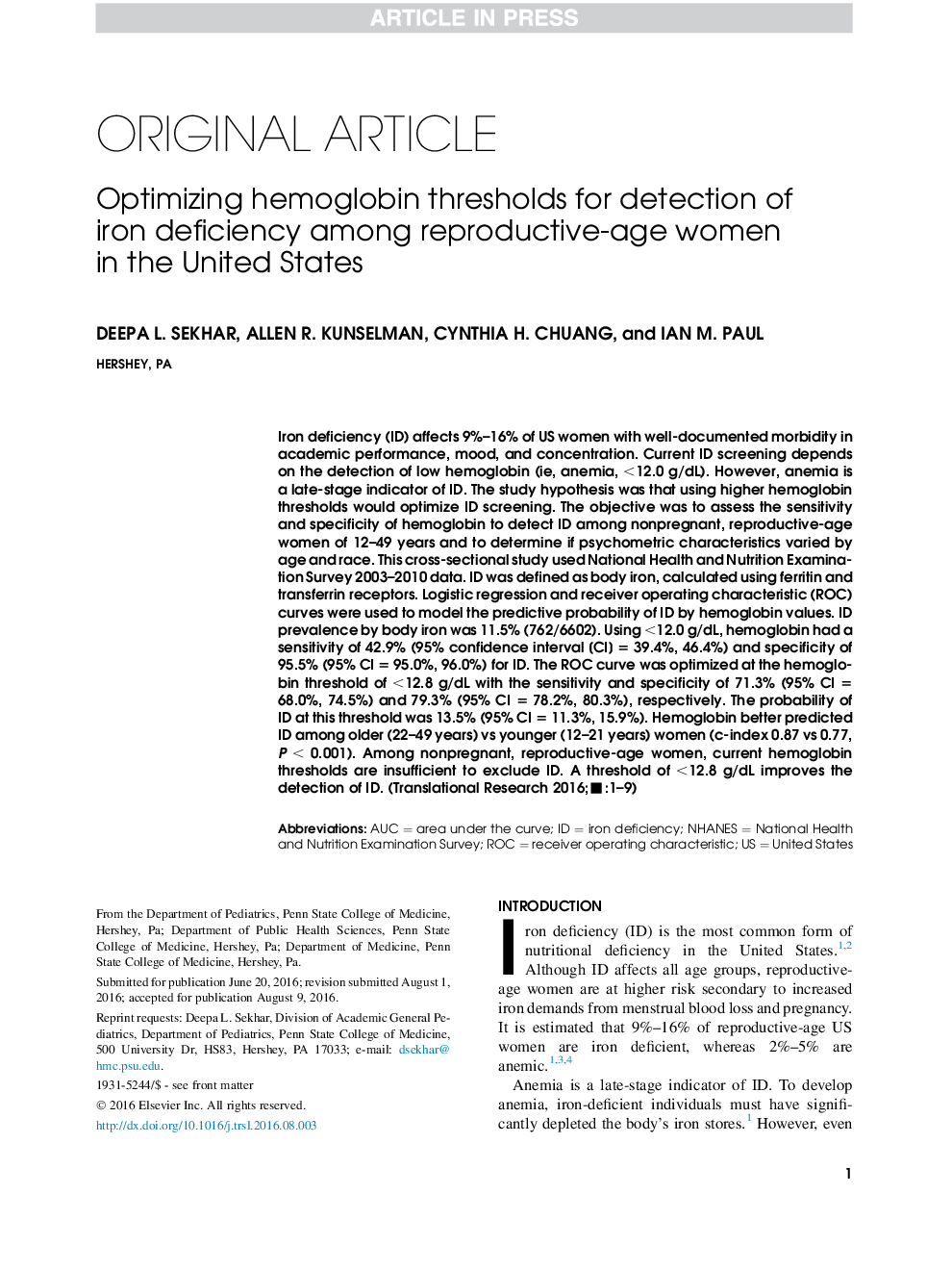| کد مقاله | کد نشریه | سال انتشار | مقاله انگلیسی | نسخه تمام متن |
|---|---|---|---|---|
| 5684999 | 1597930 | 2017 | 9 صفحه PDF | دانلود رایگان |
عنوان انگلیسی مقاله ISI
Optimizing hemoglobin thresholds for detection of iron deficiency among reproductive-age women in the United States
ترجمه فارسی عنوان
بهینه سازی آستانه هموگلوبین برای تشخیص کمبود آهن در زنان باروری در ایالات متحده
دانلود مقاله + سفارش ترجمه
دانلود مقاله ISI انگلیسی
رایگان برای ایرانیان
کلمات کلیدی
موضوعات مرتبط
علوم پزشکی و سلامت
پزشکی و دندانپزشکی
پزشکی و دندانپزشکی (عمومی)
چکیده انگلیسی
Iron deficiency (ID) affects 9%-16% of US women with well-documented morbidity in academic performance, mood, and concentration. Current ID screening depends on the detection of low hemoglobin (ie, anemia, <12.0 g/dL). However, anemia is a late-stage indicator of ID. The study hypothesis was that using higher hemoglobin thresholds would optimize ID screening. The objective was to assess the sensitivity and specificity of hemoglobin to detect ID among nonpregnant, reproductive-age women of 12-49 years and to determine if psychometric characteristics varied by age and race. This cross-sectional study used National Health and Nutrition Examination Survey 2003-2010 data. ID was defined as body iron, calculated using ferritin and transferrin receptors. Logistic regression and receiver operating characteristic (ROC) curves were used to model the predictive probability of ID by hemoglobin values. ID prevalence by body iron was 11.5% (n = 6602). Using <12.0 g/dL, hemoglobin had a sensitivity of 42.9% (95% confidence interval [CI] = 39.4%, 46.4%) and specificity of 95.5% (95% CI = 95.0%, 96.0%) for ID. The ROC curve was optimized at the hemoglobin threshold of <12.8 g/dL with the sensitivity and specificity of 71.3% (95% CI = 68.0%, 74.5%) and 79.3% (95% CI = 78.2%, 80.3%), respectively. The probability of ID at this threshold was 13.5% (95% CI = 11.3%, 15.9%). Hemoglobin better predicted ID among older (22-49 years) vs younger (12-21 years) women (c-index 0.87 vs 0.77, P < 0.001). Among nonpregnant, reproductive-age women, current hemoglobin thresholds are insufficient to exclude ID. A threshold of <12.8 g/dL improves the detection of ID.
ناشر
Database: Elsevier - ScienceDirect (ساینس دایرکت)
Journal: Translational Research - Volume 180, February 2017, Pages 68-76
Journal: Translational Research - Volume 180, February 2017, Pages 68-76
نویسندگان
Deepa L. Sekhar, Allen R. Kunselman, Cynthia H. Chuang, Ian M. Paul,
